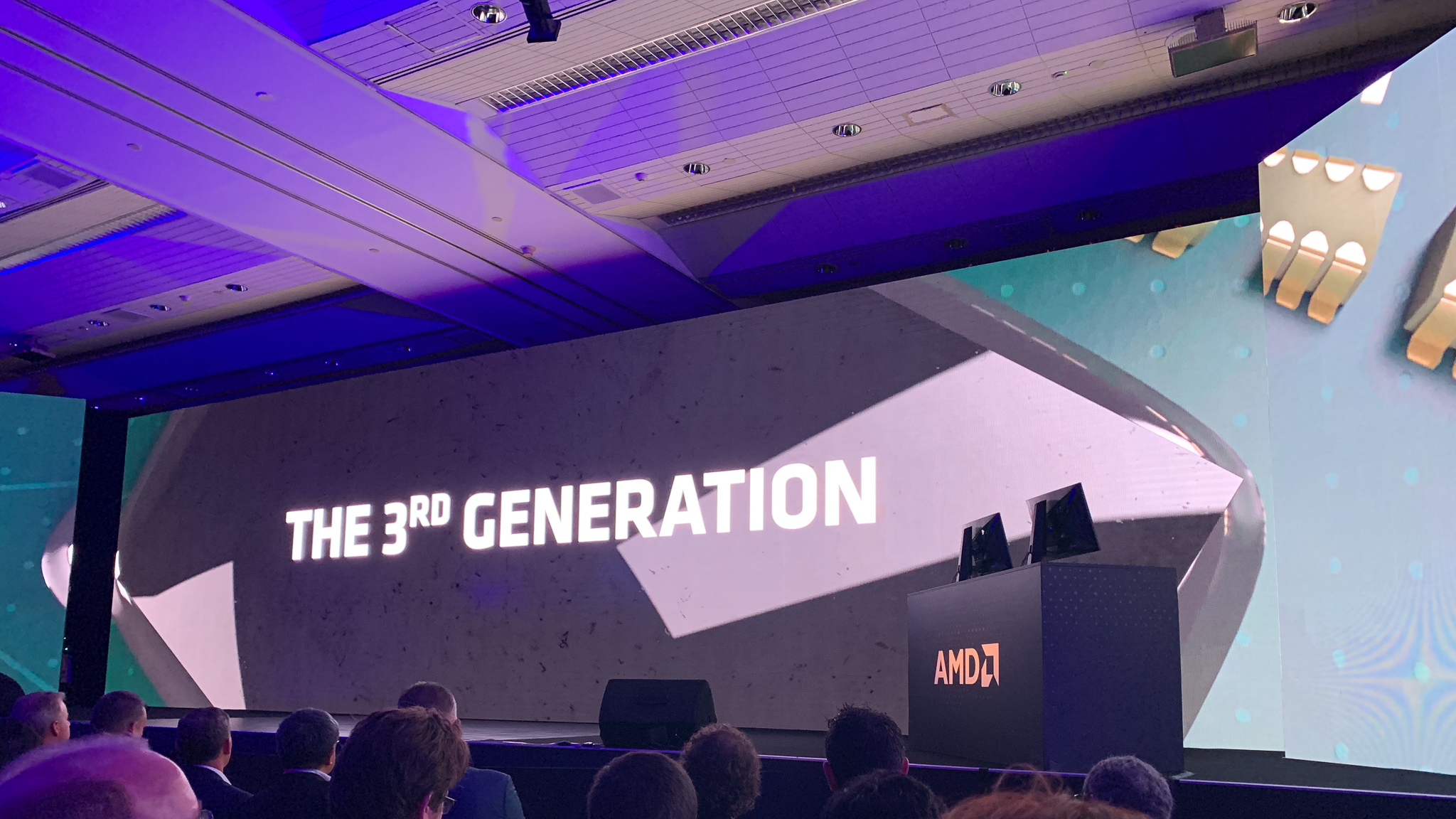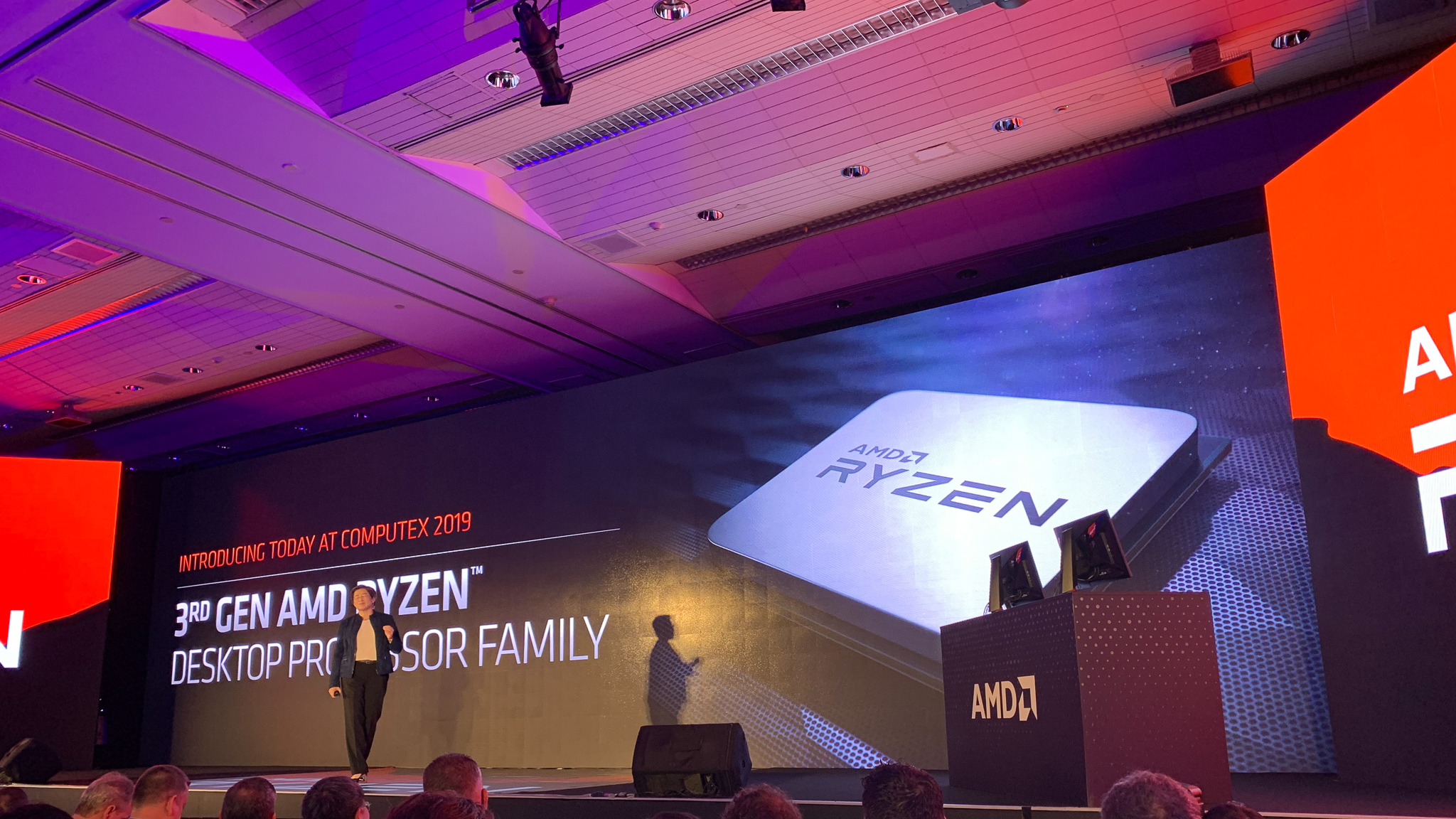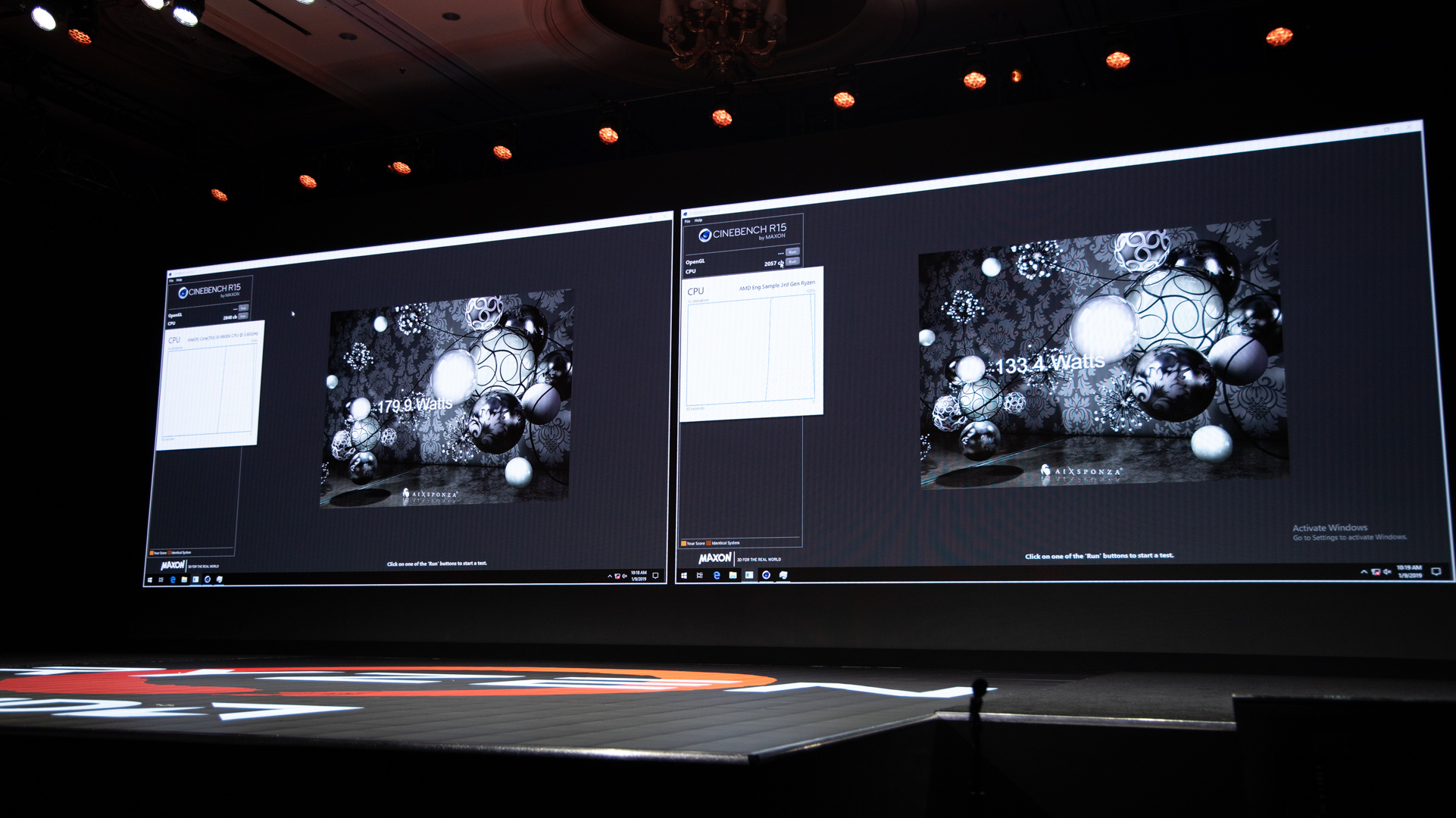Table of Contents
The AMD Ryzen 3000 is here, and AMD is well on its way to leading the processor market.
In fact, when the first generation Ryzen processors came out more than two years ago, AMD changed the market forever. When Ryzen 2nd Generation hit the streets the following year, it doubled Intel’s sales. Fast forward to 2019 and AMD has rolled out its Ryzen 3rd Generation chips, bringing the 7-nanometer (nm) Zen 2 architecture to the mainstream for the very first time.
It’s no secret that Intel is having a lot of issues with introducing 10nm Cannon Lake chips, and even its next HEDT lineup will likely stay on 14nm. So it’s hardly a surprise that AMD has swooped in to upstage its rival before Ice Lake or Lakefield had a chance to launch.
These new AMD Ryzen processors bring up to 16-cores and 32-threads to the mainstream for the first time in the Ryzen 9 3950X. And, this processor is already breaking world overclocking records, as well as bringing considerable improvement to IPC (instructions per clock) performance – even though it won’t hit the streets until September.
The best part? These new Ryzen processors do all of this while keeping the cost low for the mass consumer. In fact, analysts are already predicting that AMD Ryzen 3rd Generation could seriously threaten Intel.
We gathered all the information we have on Team Red’s next generation of desktop processors. Be sure to keep this page bookmarked, and we’ll update it with any Ryzen 3rd generation news that comes our way.
Cut to the chase
- What is it? AMD’s next line of mainstream processors
- When is it out? Out since July 7, 2019
- What will it cost? Starting at $199 (about £160, AU$290)

AMD Ryzen 3rd Generation release date
The AMD Ryzen 3rd Generation processors, first announced at CES 2019, finally arrived on July 7 – with one notable exception. The AMD Ryzen 9 3950X, the surprise reveal of E3 2019, isn’t coming until September 2019.
As for future models, apparently, AMD could be working on unannounced Ryzen 3000-series processors, including the Ryzen 9 3900, Ryzen 7 3700 and Ryzen 5 3500. And if Intel really does launch something that could compete with the AMD Ryzen 9 3900X, we’re sure AMD will have something waiting in the wings with which to compete.

AMD Ryzen 3rd Generation price
At AMD’s Computex 2019 keynote, Team Red showcased several processors from the Ryzen 5 3600 to the Ryzen 9 3900X. These CPUs offer seriously impressive options from the mid-range to the high-end. Curiously, there have been no announcements of any 7nm Zen 2 processors for the budget sector, but at least AMD launched new APUs in the Ryzen 3 3300G and Ryzen 5 3400G at $99 (£94, AU$144) and $149 (£139, AU$240), respectively.
- AMD Ryzen 9 3950X: $749 (about £590, AU$1,080)
- AMD Ryzen 9 3900X: $499 (about £390, AU$720)
- AMD Ryzen 7 3800X: $399 (about £310, AU$580)
- AMD Ryzen 7 3700X: $329 (about £260, AU$480)
- AMD Ryzen 5 3600X: $249 (about £200, AU$360)
- AMD Ryzen 5 3600: $199 (about £160, AU$290)
- AMD Ryzen 5 3400G: $149 (£139, AU$240)
- AMD Ryzen 3 3300G: $99 (£94, AU$144)

AMD Ryzen 3rd Generation specs
Now that the AMD Ryzen 3rd Generation lineup has been released, we know exactly what’s inside these new 7nm processors for consumers. You should experience significant performance bumps, with power consumption taking a nosedive. Improvements all around.
The 7nm Zen 2 architecture found in AMD Ryzen 3rd Generation processors not only allows AMD to bring TDP down to just 65W in the Ryzen 5 3600 and the Ryzen 7 3700X, but it also implements a considerable 15% improvement to IPC (instructions per clock) performance. This should see performance go up, resulting in some of the best processors for gaming.
On the high-end, there’s the Ryzen 9 3950X, an absolute monster of a processor sporting 16-cores and 32-threads, with a 4.7GHz boost clock. These specs are stunning in their own right, but what really takes it to the next level is that it manages to do it with a relatively low 105W TDP.
Then, there’s the AMD Ryzen 9 3900X, and while it’s not as impressive as the 3950X – at least on paper – it still packs 12-cores and 24-threads of high-performance power. With boost clocks up to 4.6GHz, it’s an impressive amount of power for that 105W TDP, even if temperatures get a little high. And, for about the same price point, the Ryzen 9 3900X is between 25%-40% faster than the Intel Core i9-9900K in multi-threaded loads.
And there’s the AMD Ryzen 7 3700X, which boasts 8-core, 16-thread and a TDP of just 65W. Just like the Ryzen 9 3900X, it’s also an absolute beast when it comes to multi-threaded workloads.
As far as the rumored new wave of Ryzen 3000 processors, well, the Ryzen 9 3900 would be a lower-powered version of the excellent Ryzen 9 3900X, with a similar relationship between the Ryzen 7 3700 and the Ryzen 7 3700X. They are apparently will have the same core and thread counts as their X counterparts, only with TDPs of 65W.
But, Ryzen 3rd Generation is more than just the mid-range and the top-end. We went ahead and listed out all the specs below:
- AMD Ryzen 9 3950X – 16-cores, 32-threads | 4.7GHz boost, 3.5GHz base | 105W
- AMD Ryzen 9 3900X – 12-cores, 24-threads | 4.6GHz boost, 3.8GHz base | 105W
- AMD Ryzen 7 3800X – 8-cores, 16-threads | 4.5GHz boost, 3.9GHz base | 105W
- AMD Ryzen 7 3700X – 8-cores, 16-threads | 4.4GHz boost, 3.6GHz base | 65W
- AMD Ryzen 5 3600X – 6-cores, 12-threads | 4.4GHz boost, 3.8GHz base | 95W
- AMD Ryzen 5 3600 – 6-cores, 12-threads | 4.2GHz boost, 3.6GHz base | 65W
- AMD Ryzen 5 3400G – 4-cores, 8-threads | 4.2GHz boost, 3.7GHz base | 65W
At every level, Ryzen 3rd Generation brings better performance and concurrently lowers power consumption over the previous generation. Of course, AMD boasted some benchmarks where it flexed on the competition, but that’s par for the course.
The X570 chipset also marks a generational improvement in computing. Along with the faster processors, the biggest improvement is the support for PCIe 4.0, exclusive to AMD. This new generation of PCIe brings faster graphics cards and SSDs to AMD’s platform. It delivers up to 51% faster SSD performance, along with 69% faster graphics performance – though that will be exclusive to AMD Navi graphics cards for now.
X570 also brings native support to four SuperSpeed USB ports, with a maximum bandwidth of 10Gbps. This will support both USB-A and USB-C connections, and while it’s not as fast as Thunderbolt 3, the native support should lead to wider adoption across desktop motherboards.
Ryzen isn’t just about desktop components. At E3 2019, Microsoft revealed that its follow up to the Xbox, Project Scarlett will be powered by a custom SoC made of a Zen 2 processor and an AMD Navi GPU. Slated for a “Holiday 2020” release, Project Scarlett is rumored to be four times more powerful than the Xbox One X has the ability to run games at 120FPS and potentially 8K resolutions.



